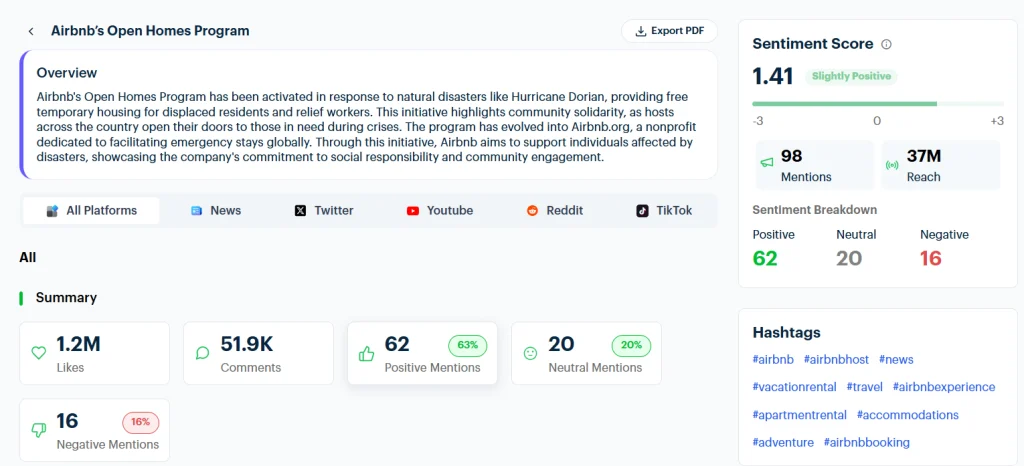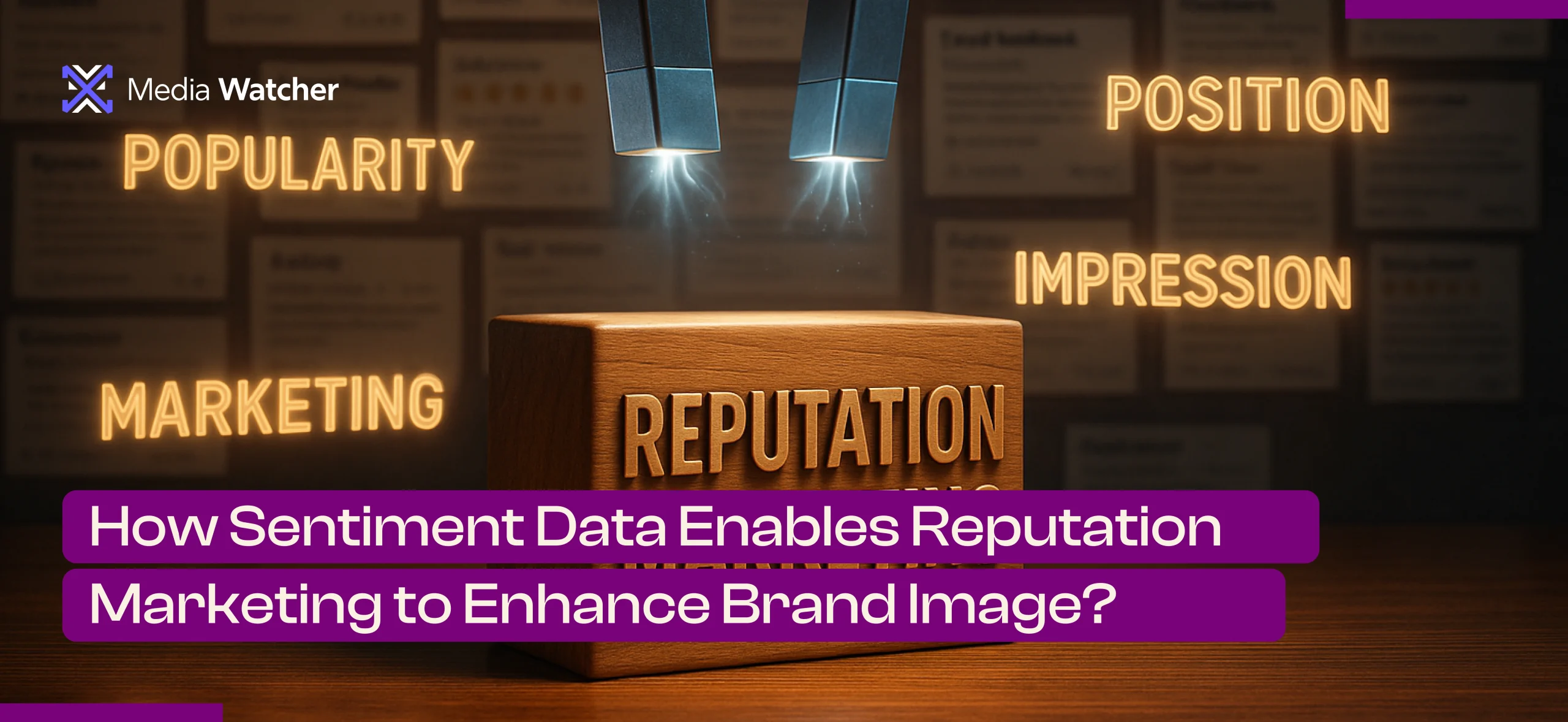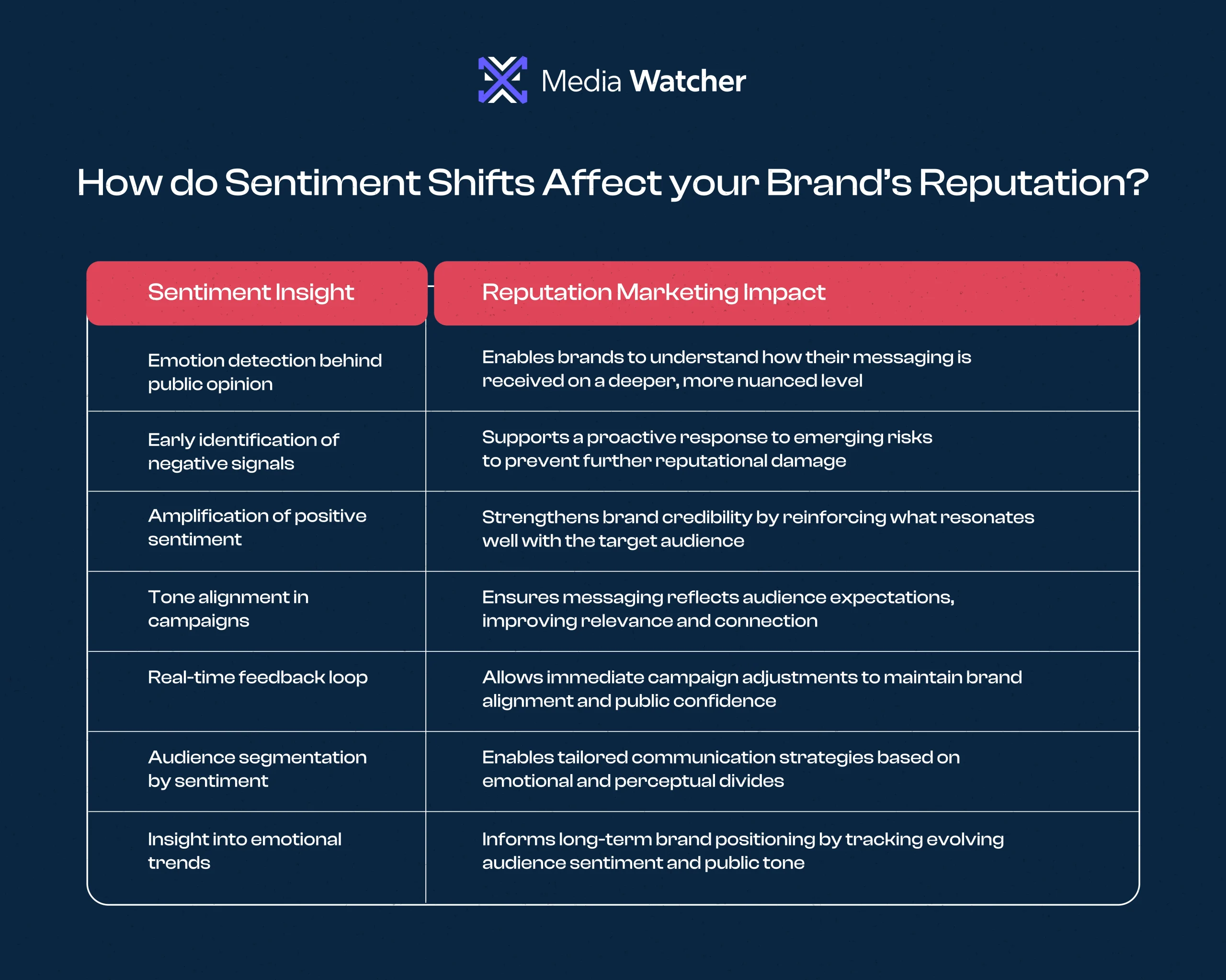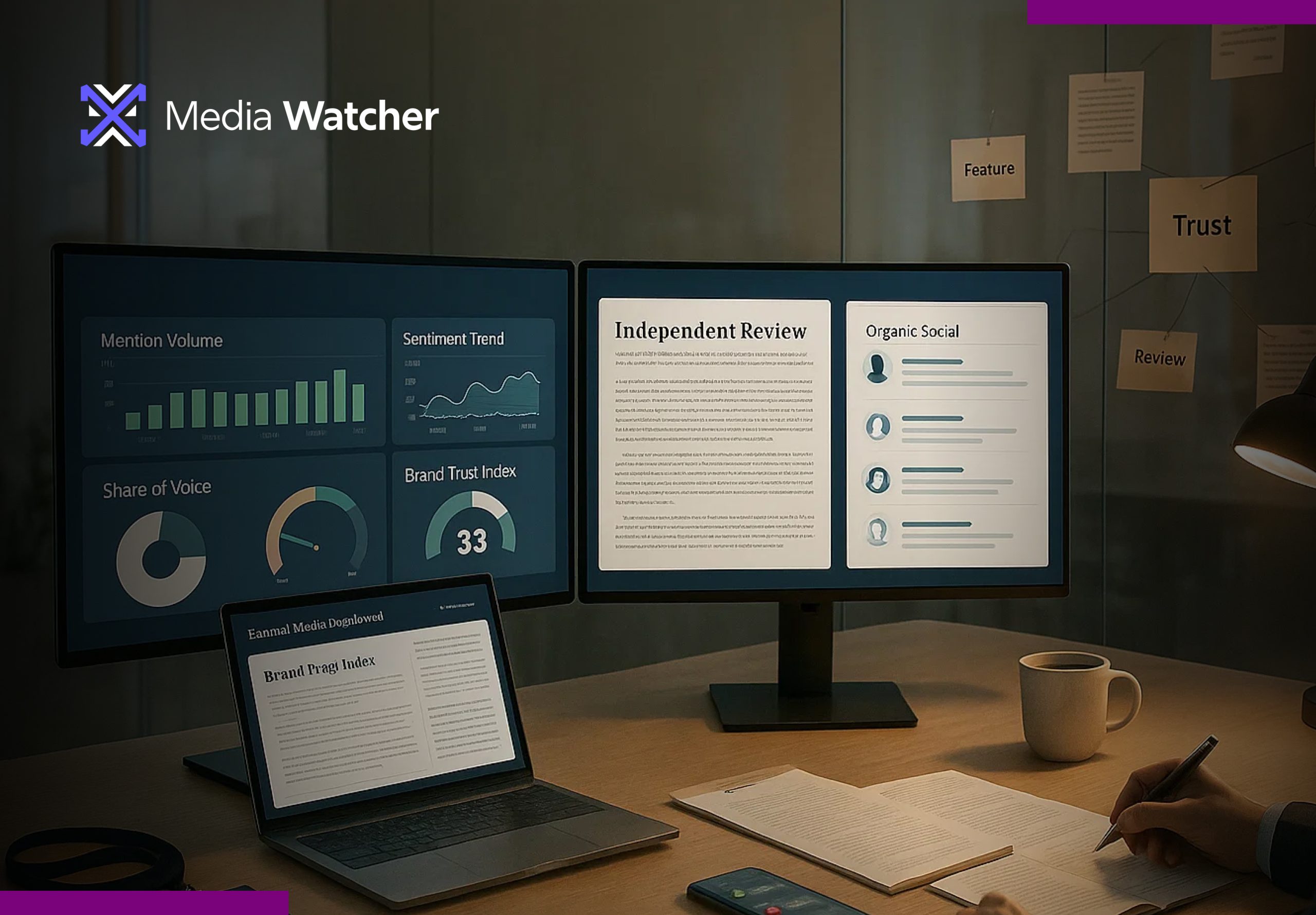You’ve got two products in front of you. Same price, same features. Which one do you pick?
Most people go for the one they trust, and according to a 2023 Edelman survey, 81% of consumers make buying decisions this way, proving reputation is a powerful currency.
In a saturated digital economy, brands are no longer judged solely on product quality or price; they are evaluated on how they are perceived publicly. Digital platforms expose brands of all sizes to constant public scrutiny. Reputation marketing services take this reality a step further by treating public judgment as a critical asset. They build reputation proactively through content that mirrors audience expectations and builds strong narratives. In short, reputation marketing analysis turns what people say about a brand into the reason others buy from it.
What is Reputation Marketing?
Reputation marketing transforms the public perception of a brand into a fundamental marketing asset rather than merely image control. In the age of micro-credibility, brands convince consumers by means of credibility, values, and social proof. In this context, brands that earnestly ensure their authenticity and societal relevance are displayed prominently are most likely to succeed.
It is more than crisis control, as it is a path to ensuring the marketing campaign aligns with the public interests. Each of the public reviews, mentions, and viral moments can be an indication of confidence or distrust. This is why their reputation should be monitored constantly.
However, reputation marketing efforts are not all there is to it; it is the speed at which a brand perceives the environment that determines its resilience. That is where sentiment analysis comes in handy. By capturing the tone, emotion, and intensity behind the public conversation, it gives brands the power to pre-emptively address changes in perception, to ensure their reputation is not only guarded but actively managed.
How Sentiment Fuels Reputation Marketing Services?
Although an online reputation marketing strategy may be frequently focused on perception management, its true value can be seen in anticipating the occurrence of emotional risk before it becomes noticeable. Sentiment analysis is not just a feedback mechanism; it is a strategic sieve through which brands assess campaign periods, tone, and audience acceptance.
Through shifts in customer sentiment across regions and platforms, brands gain the foresight to shape communication that aligns not just with brand goals but with public readiness to receive it.
Much of this sentiment is hidden in plain sight, buried in reviews, social posts, comments, and trending discussions that users contribute daily. These scattered signals, when aggregated and decoded, offer a direct window into public perception.
But how often do brands think of capitalizing on publicly available user-generated content to sense the perception of their audience?
The following table shows how brands can benefit from passive data to get the insights necessary for their reputation analysis, building, and reaching out to the right audience.
How Sentiment Analysis Continues to Sustain Airbnb’s Reputation through the Open Homes Program?
Some brand initiatives don’t just make an impact when they launch; they continue to craft public perception years later. The Open Homes Program of Airbnb is a remarkable representation of the capability of real-time sentiment monitoring to turn a socially-responsible initiative into a reputation-enhancing asset.
This campaign was initiated to offer temporary shelter to displaced people and relief workers during the disaster, such as Hurricane Dorian. Instead of designing a campaign after the crisis, Airbnb took the initiative to make its brand a community-based platform. The story was not built following community response; it was built together with it in real time.
An analysis of Airbnb mentions with respect to this campaign reveals that the brand ensured every aspect of its message aligned with prevailing public emotions. The result was a slightly positive sentiment score of 1.41, backed by 98% media mentions and a reach of over 37 million through media monitoring. Out of these, 63% of mentions were positive, showing that the campaign resonated and also mobilized social goodwill.

What made this initiative stand out was not just its altruism but also the emotional alignment. As digital audiences grew more sensitive to corporate social responsibility, Airbnb used moments of crisis to respond with empathy through social media sentiment analysis. It addressed urgent emotional needs, using sentiment insight to amplify the voices of hosts, volunteers, and communities that reflected the brand’s mission.
Hashtags like #airbnbexperience, #vacationrental, and #accommodations helped merge brand visibility with societal value, converting thoughtful storytelling into marketing capital.
However, with the help of the sentiment insights, the brand was able to unlock emotional context as an asset and demonstrated how purpose-led action, when coupled with emotional insight, can create long-term reputation value.
Suggested Read: The Art of Crisis-Resilience With Brand Reputation Management
Why is the Sentiment Analysis Backbone of Successful Reputation Marketing?
Surface-level tracking often fails to catch these shifts in time. Sentiment analysis helps identify emotional responses early, giving brands the chance to adjust before negative sentiment turns into a reputational setback.
Spots Early Backlash
Emotional surges during public discourses are very sudden and, most of the time, too late before they are noticed. Sentiment analysis curbs the outgrowth of unfavorable opinion, offering brands a critical window to manage issues proactively.
Informs Timing
Shifts in public sentiments can also be tracked to make sure that a brand decides to launch a campaign, wait, or localize it according to geographies with regulatory restrictions through social media monitoring.
Maps Region-Based Target Audience
Sentiment data based on users from diverse regions makes it possible to send more culture-conscious messages that are less prone to misinterpretation.
Guides Partnerships
Real-time sentiment can be used to assess whether an influencer and media are a match, so such relationships can build a brand as opposed to damaging it.
Anticipates Public Reaction
Through the continued sentiment analysis, brands are able to predict the possible backlash and come up with their own proactive response mechanisms that safeguard long-term perception.
Suggested Read: Strengthen Brand Reputation With Customer Sentiment Analysis
How Media Watcher Empowers Brand Reputation Monitoring Through Sentiment Analysis?
With the help of Media Watcher, brands can effectively take charge of reputation marketing across the globe by deploying a real-time perspective on audience preferences. From identifying early shifts in public sentiment to optimizing campaign tone across regions, it offers precision insights that help teams act smarter, but with greater alignment to the target audience.
So let’s look at how Media Watcher empowers you to manage the reputation strategy of your brand:
- Track 100,000+ media outlets in real-time to identify a change in the mood of the masses, before it can affect brand confidence.
- Receive an alert of a sentiment surge within less than 200 ms, and allow your team to act before the negative user feedback takes a back seat.
- Monitor emotions in 80+ languages in 235 countries to make sure campaigns are relevant to local cultures.
- Based on influencer and media sentiment mapping, select partners who can contribute to, rather than tarnish, your reputation.
- Visualize emotion patterns and tune of audiences to ensure campaigns are consistent with societal expectations.
Contact the Media Watcher team and book a demo today!





